In 1925 more and more cars were on the roads, and the roads themselves were coming in for much needed improvement. York county had graveled the Meridian Highway (now U.S. 81) as far north as the county line. Polk county was in the process of completing the job northward as well as replacing both the Prairie Creek and Blue River bridges on the south edge of Stromsburg. People spoke of the graveling as one might expect them to speak of hard surfacing today. It made the roads "all-weather," no more leaving the car somewhere and taking the railroad home when it rained.
The grade south of town was also raised quite a bit, and you can notice this as you go south past the park and see how much lower the ground level is. The climb out of this valley was known as "Barber's Hill." I was surprized to learn that the Blue River channel was changed at this time. It was straightened for "five or six hundred feet" east and west. The reason for this was that the old channel had looped alongside the road and eroded the embankment. That called for a drive down there to imagine just where this loop had been.

The most likely situation was that it headed south just east of the old bridge, and old maps confirmed this. It made a horseshoe bend where the pond just south of the dump road is now. That bit of information solved another question which came to mind while walking along the north bank of the Blue some time ago. There were high banks along the river just east of the bridge which were well above the ground level. This is completely hidden in summer but may be visible when the trees are bare. The solution: these banks were formed when the new channel was dug.
While the bridges were being built, traffic was detoured either one mile east or one mile west. C.A. Morrill posted a note in the paper closing the private Morrill bridge to the increased number of people using it during the detour. Evidently that practice was common, even though the bridge and road were on private property. A few weeks later the editor complained that Morrill's bridge was a bid narrow for automobiles, so his efforts to close it must have been in vain. Those using this route would emerge on Wall Street near the depot. Since that time little has changed. Already in 1925 fishermen were reporting "nothing alive" in the Blue.
-Dalakarl
..............................
There was a new trend among automobile owners in 1925 as the following facts will show. New car purchases were still reported in the newspapers. First, a bit of review about "touring cars." Touring cars were open vehicles with folding tops and side curtains which had to be installed in inclement weather. They were truly "horseless carriages" offering little advantage over buggies other than the absence of the horses. "Closed cars," or sedans, were just coming in. If you opted for a closed Ford it could very nearly double the price even though the engine and chassis were the same.
Headlight editor Chattie Coleman had been enthusiastic about her open Model T and her Dodge Touring, but in 1925 she decided to get a new Dodge closed sedan and enjoy the added protection of a permanent top, doors and windows. Rystrom was selling the Dodge line at the time. She was not alone. Grandpa's brother-in-law, Eric Forslund, had sold his grocery store business and treated himself to a new Buick sedan. (We know he re-entered the grocery business but will have to wait as we read through the later papers to find out details.) He immediately made a trip to Lincoln to visit the relatives. Buicks, as I recall, were then being sold by Einar Swanson.
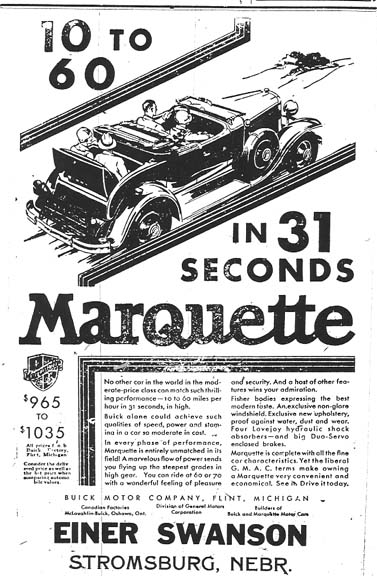
A little-known 1929 open Buick economy model
Ira Banta, an officer of Stromsburg Bank, made the purchase of a Chrysler sedan, and Emil S.F. Johnson went to Lincoln to bring it to its new home. Chattie observed that on a recent rainy weekend there had appeared a whole lot more old Ford Model T's around the square than ususal. She no doubt correctly concluded that the farmers brought out the old Fords when the roads were bad, having kept them for just such a purpose. Trade-ins could not have been very good; a used car ad listed a 1916 T Touring for $40. That was the year of Grandpa's T and I wonder if it made the move with him to Wausa in 1920.
With more cars come more accidents. Two years previously Forslund had been hit by "the motor" (single car rail passenger conveyance) on his way to the Methodist campgrounds. Parked railcars obscured the crossing, and the motor took off the rear wheels of his Model T and injured the passengers, especially Mrs. Forslund who was laid up for some time. Fortunately no one was killed.
-Dalakarl
.............................................
First an update on the internet address for listening to Swedish church sermons: http://www.sondaghelaveckan.se/. Crossnet.se now has a different purpose. Even in Sweden, things change.
Now to resume the tour of Polk county rural churches as inspired by Diana Langer and the Historical Society programs and display boards which can be seen at the St. John's church on the museum grounds. We left off with the Wesley Chapel site and cemetery and now proceed up into "the valley." Somehow it's always fun to drive through "the bluffs," even if they are probably only a few hundred feet from top to bottom. The trees have a better time of it, there are little lakes here and there, and an increasing number of homes enjoy the view from the crest.
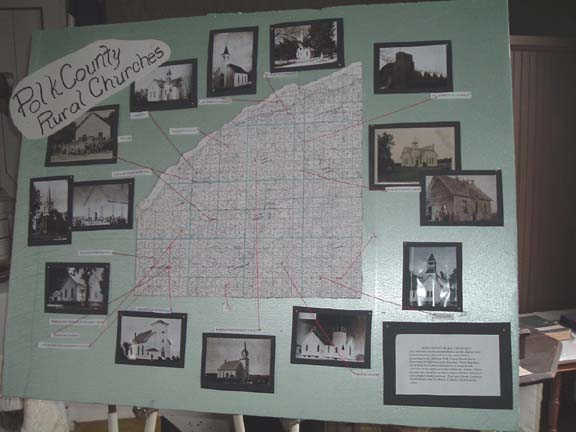
The good news about the valley church sites in the central and eastern part of the county is that they are along a line going north from Wesley Chapel. We didn't know that until studying the maps. Going three miles further north will take you through the bluffs mentioned above and right to the place where St. Andrews Catholic church stood. 1995 marked the joining of this parish with the Osceola St. Vincent's church. The cemetery grounds which remain enjoy the finest of care and are very photogenic with the bluffs forming a background.
The focus of the site is the monument which gives the history of St. Andrews on one side, and those doners who made it possible on the other. Along with the church bell displayed adjacent to the monument, this memorial is the most impressive of its kind I have seen countywide, or for any former church site anywhere for that matter. The historical notes tell that this was the last of three church buildings occupied by the congregation, the directions being provided to the first site nearby. Fire destroyed the first two churches, but the determined valley people rebuilt each time. Pictures of the final St. Andrews reveal that its main sanctuary was in the form of a quanset. That kind of practicality indicates that the people of the valley are no different than us "highlanders;" in fact they are very much the same.
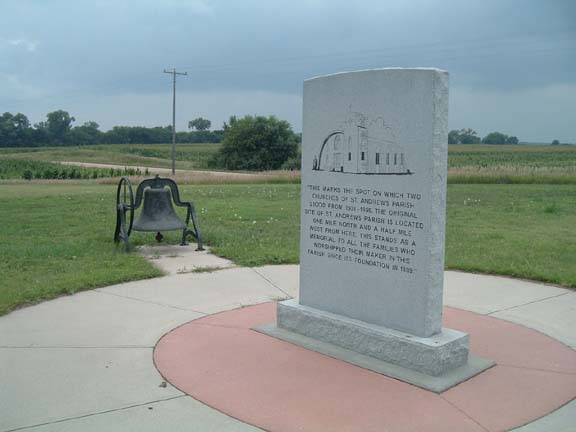
A good account of St. Andrews is in the orange Osceola centennial book, pages 710-711. There it is noted that Rev. Francis Messing was a son of this congregation and celebrated his second Mass there in 1959. Other familiar family names appear on gravestones throughout the cemetery. There is a saying, "see America first." To that we might add, "see your county first."
-Dalakarl
.......................................
Proceeding three more miles north from St. Andrews cemetery one can catch sight to the west of a view that, in winter, would make a wonderful Christmas card. Even in summer it is as picturesque as a country church can possibly be. It is St. Mary's Pilzno, built in 1891 and named for Pilzno, Poland, where most of its members originated. The grounds, including a cemetery, are manicured. The Polish and the Swedes have this in common, that others seem to like to make fun of us. But we don't care, do we?
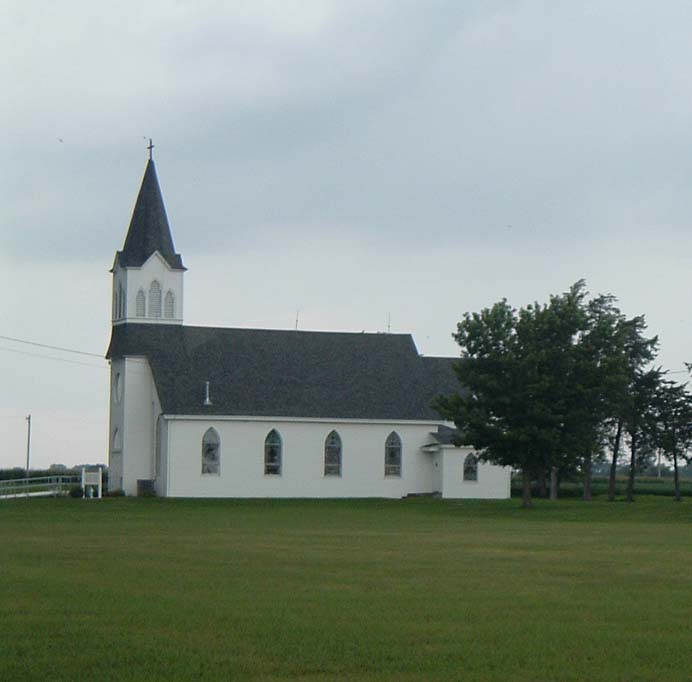
Between the south channel of the Platte and the main channel lies the "Island Precinct" of Polk county. Many of the immigrant Poles lived on the "island" and this led to a bit of church politics. A strong parish at Duncan across the river north laid claim to these immigrants, and even managed some "gerrymandering" of diocesan boundaries to include everything north of the mostly dry south channel for the Omaha diocese. The immigrants persisted, and managed to build their own church under the Lincoln diocese.
In the 1971 Osceola centennial book (the orange book) it is recorded that one of St. Mary's sons, Rev. A. J. Lisko, was ordained to the priesthood in 1940 and at the time of the book was at David City parish where he served as Dean. Another member of the Lisko family is remembered in this news item from 2011:
It was on June 17, 1906 that Valeria (Lisko) Smolenski was born near Pilzno. Mrs. Smolenski celebrated her 105th birthday June 19 with an open house at the Legion club in Silver Creek.
Mrs. Smolenski has been a member of the same parish - St. Mary in Pilzno - her entire life. Still very independent, Mrs. Smolenski lives in her own home, taking care of most of her daily needs. A son, Henry, lives a half-mile from his mother and checks in on her every day. Her daughter Rosaline also makes weekly visits to care for her mother.
At her open house, Mrs. Smolenski reflected upon her 105 years and the role that the Catholic faith has played in her life and that of her family.
Her father John Lisko was born in Poland in 1877 and immigrated with his family to the United States as an infant. Mrs. Smolenski’s mother Katherine Kontor was born in 1881 near Pilzno. John and Katherine were married at St. Mary Church in Pilzno in 1901. They had nine children. Mrs. Smolenski is the third of the nine children. She has one remaining sister, Regina, who is 92...
One of Mrs. Smolenski’s pastimes was raising flowers. For many decades she brought flowers to church to adorn the altars. She arranged flowers in the church until she was 95.
"I quit because they told me I shouldn’t stand on a chair anymore to do that," she said with a chuckle.
It's worth a drive to see this "pride of the valley" church. And remember it's Pilzno, not Pilzner.
-Dalakarl
......................................
The Blue river which is merely a trickling rivulet just south of Stromsburg is a full grown stream at the present. A. C. Morrill, whose home is near the river has had quite a strenuous time trying to stem the rising waters. On Monday the ice went out of the Colson dam in cakes two feet thick, some of them twenty feet long and fifteen feet wide. Between the Morrill home and town, a private bridge spans the river and Mr. Morrill discovered that unless strenuous action was taken the bridge would go out. He tried to direct the ice under the bridge, but soon discovered the job was too big for one man, so called for help and before the day was done had five men on the job.
Dynamite was used to break the ice, and since it was broken up it could be directed under the bridge between the supports. Two men were on the job all night, and two more kept up the work all day Tuesday, and so by hard work the bridge was saved. Mr. Morrill did not forget his part and at two o'clock in the morning took the watchmen a lunch and hot coffee. At that bridge one can usually step across the creek, but right now the water in the lowland is spread the width of a city block. Arthur Morrill is considered a good bridge player, but this was a bridge game that was not to his fancy.
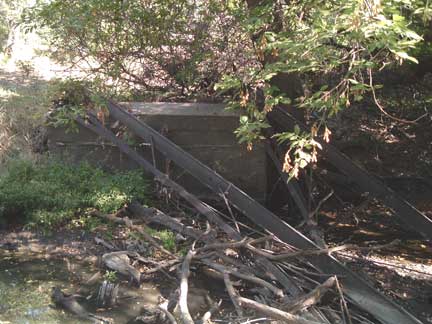
What's left of Morrill's bridge - 2013
-Dalakarl
..............................................
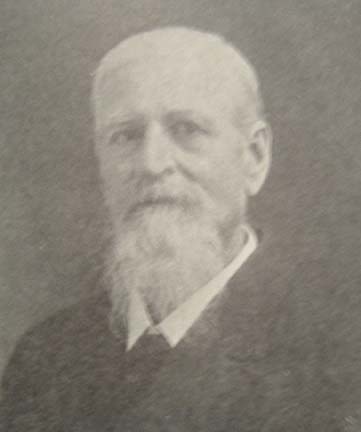
In October of 1926 the obituary of Rev. C.A. Falk appeared in the paper. Though lengthy, it could not begin to tell the whole story of this remarkable man. That whole story has in fact never been told...all we have is a growing list of things that he did and places that he visited as a traveling preacher based here in Polk county.
One of the reasons no book has been written about Rev. Falk is that no church denomination could lay claim to him. He was one of those "independent" spirits who was welcomed by all but obliged to none. The obituary mentions his training at Augustana Seminary, then at Paxton, Illinois, and further studies at "Anskari Synod" school at Knoxville, Illinois. Had that Synod thrived as hoped and survived, its historians would have no doubt given Falk a prominent place in their story as one of their most successful pastors. But instead, the leaders of that Synod became convinced that denominations were not Biblical, and dissolved their organization.
So Falk and his Stromsburg congregation were left without a denomination and had to sail an independent course for many years. It was possible for him to continue his apostolic journeys around the region because of the financial independence he also enjoyed. The obituary mentions the farm west of town, which he parlayed into other real estate and business interests through the years.
Though the Ansgar (Anskari) Synod had disbanded in 1884, it was as late as 1910 before some of their former churches realigned themselves with any other denomination. Most became either Mission Covenant members, Free Mission members, or else tried to remain independent of any denomination. At the time of his death, Falk had for years been the teacher of the older men's Sunday School class in the Swedish Free Mission church. But perhaps never again will we see his kind of preacher.
-Dalakarl
...............................................
"It is an item of surprising obscurity to the nation at large and even to the majority of the inhabitants of the state, that Nebraska leads all the Union in the mining of potash. ...Potash is an alkaline salt from the ashes of prehistoric plants, the properties of which are recognized the world over as valuable fertilizer material."
"...For decades the great potash beds of Strassfurt, Germany, supplied potash to practically the entire world. When the World War broke out this supply was cut off from the Allied nations and also America."
"In 1918 the production of potash in Nebraska was estimated at 150,000 tons, or about 60% of the entire production in the United States. ...Two thousand men were employed in the potash industry and due to the great shortage the price of potash raised about 1,000 percent. This caused large fortunes to be made in the business. Many new towns in the Sandhill region of Nebraska owe their origin to the erection of potash plants in the vicinity."
After the war the German sources returned to the market and prices fell. So the "potash bubble" dealt the sandhills another cruel blow. I wish we knew more about which towns were built around the potash plants (there were reportedly 21 of them at the peak) and why potash is apparently no longer favored as fertilizer.
-Dalakarl
postscript: since this column was published other material has come to light: the major town was Antioch, east of Alliance, now described as a ghost town but at its peak boasting 25 million dollars of plant investment and 2,000 workers. Potash is the name for the natural form of the chemical "potassium." That explains a lot. Ruins pictured below:
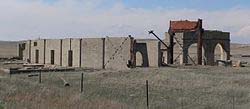
...........................
If you look up at the top of the Polk County News building, until recently the Cornerstone Bank building and before that the First National bank building, you will see the name, "Wilson." Just to review, John Wilson left Sweden in 1848 and pursued his fortunes on the California gold fields, on Illinois, Iowa and Polk county Nebraska farms and finally in the banking business in Stromsburg. Here his sons John Wesley, Victor and Nathan succeeded him at the head of the Farmers and Merchants Bank, later First National. It should be mentioned that his daughter Emma was, before her early death, the wife of Victor Anderson. Middle son Victor Wilson distinguished himself by being named to the state railroad commission, but there is a chapter in his career wholly unknown to us till encountering this story in the May 13, 1926 issue of the paper:
"Victor E. Wilson, formerly of the Nebraska railroad commission, has become engaged in an interesting business venture in California. He is vice president of the Yellow Drive Yourself stations, a concern with a fleet of more than a thousand cars and offices all along the coast from Mexico to British Columbia. The patron rents a car in Los Angeles, say, drives it away and turns it in at San Francisco, or Portland, or Vancouver, making settlement on a mileage basis. It is a new business on the coast where there is said to be a strong demand for this form of service. Mr. Wilson come to Lincoln from Polk County, where he was familiarly known among the Swedes as 'Wictor Vilson.' (from the Lincoln State Journal)"
What are the odds that this Yellow Drive Yourself business lies behind Hertz or one of the other rent-a-car giants?
The red centennial book has this further insight into the industrious Victor Wilson: "His initial move at this time was in getting the Union Pacific to change the locations of the towns of Polk and Hordville when the Central City extension was built in 1906, and after doing so, he, together with his brothers and Calmar McCune, Jr., organized the City Improvement Company which bought the land where Polk and Hordville are located and platted, developed and sold the townsites. Immediately following, the syndicate organized the First National Bank of Polk and the Farmers State Bank of Hordville, and assisted with the banks for a number of years."
Next time you're downtown, look up at the Wilson building and give a salute.
-Dalakarl
....................
Perhaps the most interesting insight into the Green's Chapel Methodist church, which once thrived a few miles east of Stromsburg, is found in the recollections of Rebecca Green Meyers in the 1972 history (the red book, pg 81). There she writes of her father, Thomas Green, who came to Polk county in 1872. They were among those who took shelter in their wagon box till better quarters could be built.
Much of her story revolves around a blizzard in 1873, including her family members being stranded at a church service "in a sod house which on M. Steever's land two and a half miles south and four miles east of Stromsburg... They had to stay until Tuesday night. Mr. McGaw forced his way home sometime Tuesday and returned to the school with food and horses. He took the people home that afternoon."
This account of a church service in a school echoes the report on page 237 that, "Sunday School had been conducted at the Liberty School for many years, but it now (1885) transferred all its help and enrollment to the Green's Chapel Church." The blizzard account may be an early example of just such a Sunday School meeting. The story of the Sunday School movement remains untold, but the early papers often report training sessions for leaders in this ministry. Just how that relates to the Methodist denomination or to the organization called The Sunday School Union I do not know.
Rebecca Meyers goes on to say, "My father started Green's Chapel in 1892 because it was so far to any other church and he disliked to miss and he had to when the roads and weather were bad." Her date may differ from the account on page 237 (1885) because the congregation may have been organized while still meeting in a schoolhouse. She does not mention that the land for the first church was donated by her father.
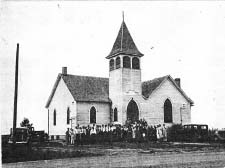
A View from the Methodist history (on disk at the library)
The Green's Chapel church was moved three and one-half miles northeast to land identified as Perry Steever's in 1904. In 1909 its expanding membership prompted a decision to call its own minister rather than sharing with Stromsburg Methodist Church as before. In 1912 a major renovation was accomplished. Only in 1958 did the congregation finally merge with Stromsburg and end its history out in the country. Lumber from the dismantled church found its way into the neighboring house of some friends of ours.
At the time of its earlier move northward, the owner of the early site is listed as William Green. Rebecca does not mention this name, but it is of interest to me since a Mrs. W.H. Green figures very prominently in our family history in Stromsburg: so much so that it is suspected that they knew each other in Sweden or were somehow related. The answer to one question often poses yet another.
-Dalakarl
...........................................
This column has been based on the premise that things that were common knowledge one hundred years ago might be totally forgotten today. But how about something that happened in the 1980's? Could that have already been forgotten, too?
Well, it seems I have forgotten something from the eighties and that something came to light while looking at the Swede Plain section of the 1992 Stromsburg history (blue book). It seems that when the Swede Plain congregation dissolved, there was discussion about what to do with the building. Now we all know that it was fortunately preserved on the grounds of Covenant Cedars Bible Camp north of Hordville. But what I had forgotten was this:
"Since Stromsburg is the Swede Capital of Nebraska, and since the Swede Plain Church was not only a well-maintained building but also one with historical significance, it was suggested to move the church north of the Covenant Home. There the church could be used to house items of historical importance. A Swedish Historial Society was organized on August 2, 1986, with a steering committee and interested people in the community. This was option number one, to provide a tourist attraction and a Swedish setting for weddings, church services, social events and church records." (page 141)
I have to confess, though I was administrator of Covenant Home at that time, this paragraph took me by complete surprise. Surely it was known at the time, but my "forgetter" completely outdid my "rememberer." Now that the world has taken a few turns, this idea seems better than ever. Now it might, just might, be that the Civic Improvement people were unaware that the Covenant Home board and the City of Stromsburg were well on their way to developing an arboretum on the site envisioned for the Swede Plain church. So it may have been that classic "failure to communicate." But one can now imagine a wonderful outcome for that "option number one" that still has not been fulfilled and is needed now more than ever.
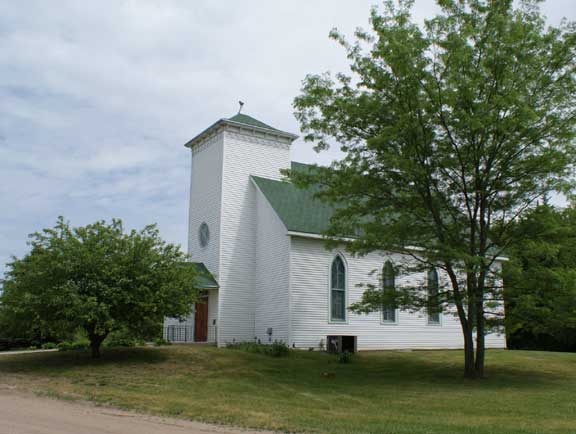
Swede Plain Methodist church at Covenant Cedars
And do the records of the "Swedish Historical Society" survive? Some of the members of the steering committee are still among us and I intend to ask them about it.
-Dalakarl
..............................................